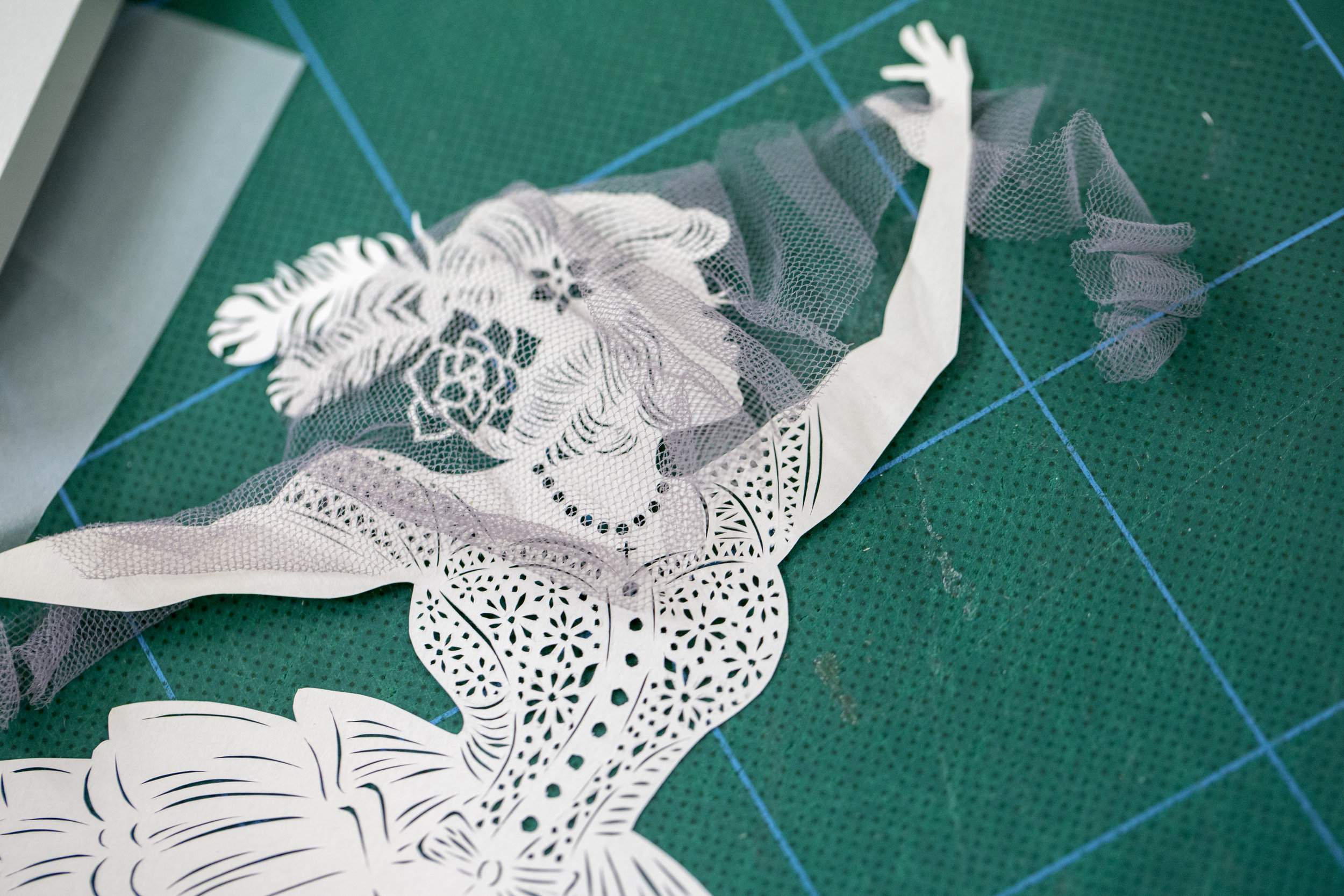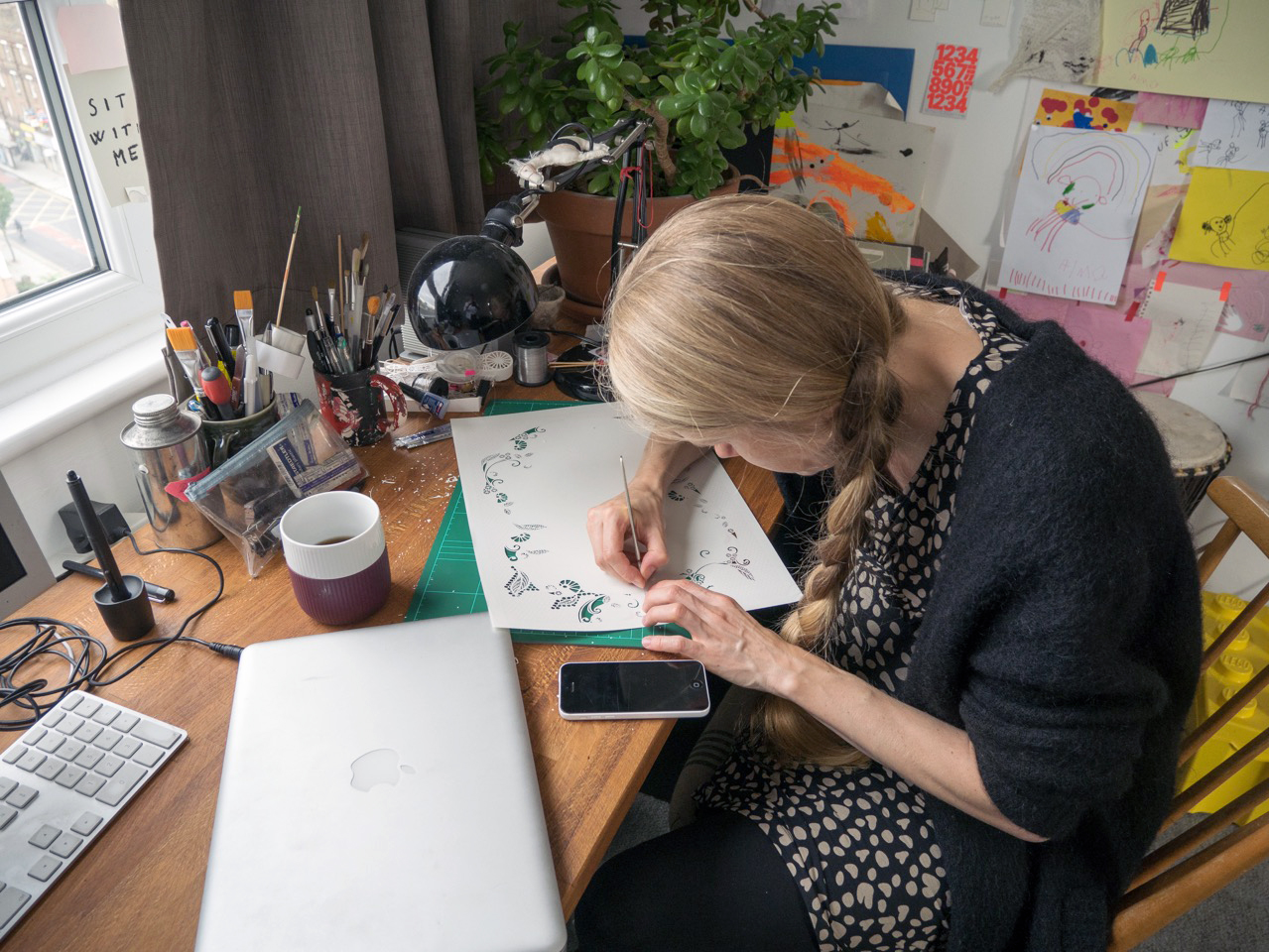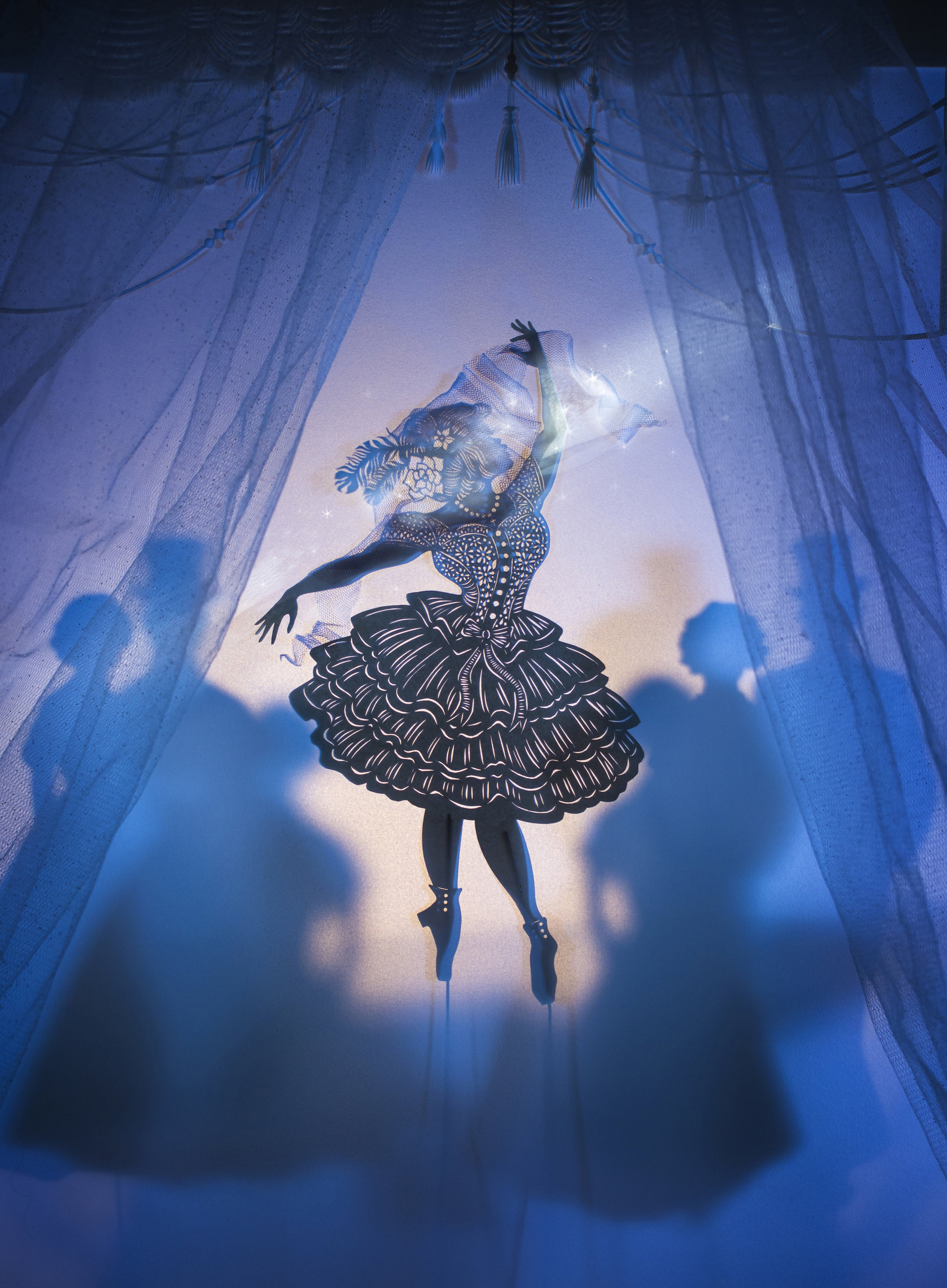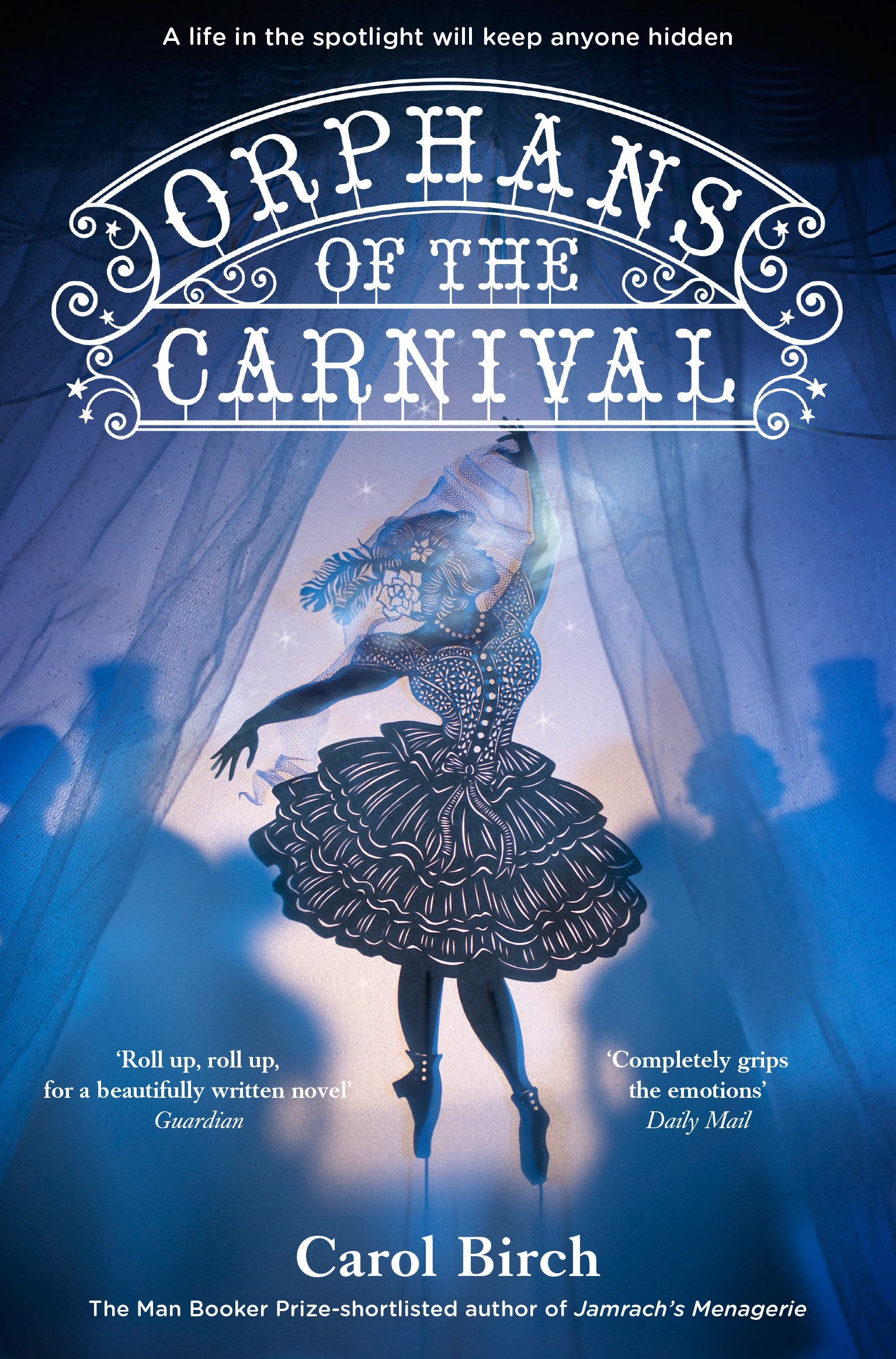Andersen M on Creating the Paperback Cover of Orphans of the Carnival

The UK paperback version of Orphans of the Carnival features amazing paper cutouts created by the skilled hands of the design duo that is Andersen M. Here, in their own words, they share a little on who they are and how they went about developing the artwork of this cover.
The siblings Martin and Line Andersen make up Andersen M, an art directing, graphic designing, and film making duo specialising in intricate, beautiful papercraft, graphic design, film and photography. Their charming, atmospheric films are highly evocative and deceptively simple, retaining a handmade, tactile quality at the same time as being totally cutting edge. The studio won numerous awards for their animated film ‘Going West’ including 2 Gold Lions at Cannes.
“I wanted to showcase Julia in away that didn’t solely focus on her appearance but also her talent and the effect she had on her audience.”
We were approached by Rafi Romaya who had seen some of our work –a paper crafted project we had created for Kinfolk Magazine about Nordic Folktales (silhouetted paper cuts). She was keen for us to work in a similar style and create something unique that represented the main character and general atmosphere of the book.
Initial concepts. Images: Andersen M
We did a lot of research. First we read the book and looked into the actual facts of the story. It’s a really tragic, heartbreaking story.
The main character Julia Pastrana was a performer and singer during the 19th century. Pastrana, an indigenous woman from Mexico. She was born with a genetic condition, hypertrichosis terminalis. her face and body were covered with straight black hair. Her ears and nose were unusually large, and her teeth were irregular. Francisco Sepúlveda, a customs official in Mazatlán, purchased Pastrana and brought her to the United States. She performed and toured throughout the U.S. and Europe. Pastrana was advertised as a hybrid between an ape and a human, and as a "Bear Woman". However, during her performances, she illustrated her intelligence and talent: singing, dancing, and interacting with the audience. During a tour in Moscow, Pastrana gave birth to a baby with features similar to her own. The child survived only three days, and Pastrana died of postpartum complications five days later.
Image: Andersen M
It was exciting to come up with the visuals. We set out to create something graphic and atmospheric and everything was cut out by hand. We wanted to use mixed media and used paper and lace and metal wire. We created a few different cut out versions of Julia Pastrana before we ended up with the final one which was by far the most detailed. We kept the background audience more graphic as silhouetted characters staring at her performing. We came up with the idea of having Julia held up by thin metal wires as to suggest that her life was “controlled”.
Images: Andersen M
Everything was made out of paper. except for the curtain and her veil which was made of lace. The entire set up was the size of a small table top. The layouts artwork and photoshoot was created over a period of 2-3 weeks. We also created a few hand-cut type layouts which we really loved.
Images: Andersen M












